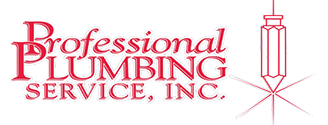Whether you’re a homeowner looking to tackle minor plumbing repairs or seeking knowledge to communicate effectively with a professional plumber, this guide empowers you with the information you need. At Professional Plumbing, we aim to make plumbing issues less daunting by offering clear explanations and practical advice that will enable you to manage them promptly and effectively.
A dripping faucet refers to a faucet that consistently releases water drops even when it is supposed to be turned off. This common plumbing issue is typically caused by worn-out or damaged components within the faucet, such as washers, O-rings, or seals. The persistent dripping not only wastes water but can also lead to increased water bills, potential water damage, and the growth of mold and mildew.
Dripping faucets, if left unaddressed, can result in water damage to surrounding fixtures and surfaces. Iowa homeowners may want to prevent potential damage to their homes, especially during periods of heavy rainfall or snowmelt. Additionally, by promptly fixing dripping faucets, Iowa residents can play a part in the collective effort to conserve water resources and maintain the integrity of their homes.
When to Seek Professional Help
Pipe leaks in a home can occur due to several factors, which can contribute to the deterioration or damage of plumbing systems. From pipe corrosion to excessive water pressure, Eastern Iowa residents must take preventative measures to avoid such issues. To address leaky pipes, Iowa homeowners must identify and repair problems as soon as they arise. Regular inspections, particularly before winter sets in, can help detect potential problems early and prevent more significant damage.
When to Seek Professional Help
1. Identify the Issue
Determine if the toilet is continuously running, with water flowing into the bowl even when not in use. This may indicate a problem with the flush mechanism or the fill valve.
2. Open the Tank Lid
Carefully remove the tank lid to access the internal components. Set the lid aside in a safe place.
3. Check the Flapper
Inspect the flapper, a rubber or plastic component at the bottom of the tank. Ensure it forms a proper seal over the flush valve. If it’s warped or damaged, it may need replacement.
4. Adjust the Chain
Check the chain connecting the flush lever to the flapper. If it’s too long or tangled, it might prevent the flapper from closing properly. Adjust the chain length as needed.
5. Inspect the Fill Valve
Examine the fill valve, typically located on the left side of the tank. Ensure it is functioning correctly and is not obstructed. If there are issues, it may need cleaning or replacement.
6. Adjust the Water Level
Check the water level in the tank. Adjust the float to set the desired water level. A water level that is too high can lead to continuous running.
7. Clean or Replace Components
If mineral buildup or debris is affecting the components, clean them thoroughly. In some cases, worn-out parts like the flapper or fill valve may need replacement.
8. Check for Leaks
Look for any signs of water leaks around the base of the toilet, in the tank, or on the floor. Addressing leaks promptly can prevent further damage.
9. Turn Off the Water Supply
If the toilet continues to run after attempting adjustments, locate the shut-off valve near the base of the toilet and turn it off. This will stop water flow to the toilet until the issue is resolved.
10. Seek Professional Help
If DIY efforts do not resolve the issue or if there are underlying problems with the toilet’s internal mechanisms, consider seeking assistance from a professional plumber.
Remember, safety is paramount when dealing with plumbing issues. If you’re unsure or uncomfortable handling the situation, it’s always a good idea to consult with a plumbing professional. By addressing a running toilet promptly, you can conserve water, prevent potential damage, and maintain the functionality of your bathroom plumbing.
1. Check the Whole House
Determine if the low water pressure is affecting the entire house or specific fixtures. Turn on multiple faucets and showers to assess whether the issue is widespread.
2. Inspect the Water Meter Valve
Ensure that the main water meter valve, often located near the water meter itself, is fully open. If it’s partially closed, it can restrict water flow into your home.
3. Examine Pressure-Reducing Valve
If your home has a pressure-reducing valve (PRV), check its setting. Adjusting the valve may increase water pressure. Consult the manufacturer’s instructions for proper adjustments.
4. Inspect Shut-Off Valves
Check the individual shut-off valves near faucets and appliances. Ensure they are fully open. Partially closed valves can limit water flow.
5. Clean Aerator Screens
Remove and clean the aerator screens on faucets and showerheads. Sediment or mineral deposits can accumulate and restrict water flow. Soak them in vinegar to dissolve any build-up.
6. Check for Leaks
Inspect for any visible leaks in your plumbing system, both indoors and outdoors. Leaks can contribute to low water pressure. Fixing leaks can often improve water pressure.
7. Inspect Water Softener
If your home has a water softener, check it for issues. A build-up in water softeners can also affect water pressure. Follow the manufacturer’s guidelines for maintenance.
8. Test Pressure at Outdoor Spigots
Connect a pressure gauge to an outdoor spigot and turn it on. Compare the pressure reading to the recommended pressure for your area (typically around 40-60 psi). If it’s significantly lower, there may be an issue.
9. Contact Your Water Provider
Reach out to your local water utility to inquire about any issues with the municipal water supply. There might be maintenance or repairs affecting water pressure.
10. Consult a Professional Plumber
If the low water pressure persists or if you are unable to identify the cause, consider hiring a professional plumber. They can perform a more in-depth assessment and recommend solutions.
11. Consider Upgrading Plumbing
If your home has older pipes that are deteriorating, consider upgrading to modern plumbing. Older pipes may have build-ups or corrosion that can significantly impact water pressure.
Addressing low water pressure may involve a combination of these steps. It’s essential to identify the specific cause of the issue to implement the most effective solution. If you’re unsure or unable to resolve the problem, seeking assistance from a professional plumber is advisable.
A slow-draining sink can be caused by various factors, and identifying the specific issue is crucial for effective resolution. Here are common reasons why a sink may drain slowly:
Identifying the specific cause of a slow-draining sink may require a combination of visual inspection, DIY methods, and, in some cases, professional assistance. Regular preventive maintenance, such as using drain screens and being mindful of what goes down the sink, can help minimize the risk of slow drainage issues. If the problem persists or is beyond your expertise, consulting with a professional plumber is advisable for a thorough assessment and effective resolution.
A sump pump failure can lead to potential water damage and flooding in basements or crawl spaces. Iowa homeowners should be vigilant and take prompt action when they suspect or experience sump pump issues. Here are situations in which a homeowner should seek assistance for sump pump failure:
Prompt attention to sump pump issues can prevent extensive water damage and protect your home from flooding. If you encounter any of the above signs of sump pump failure, it’s advisable to consult with a professional plumber or sump pump specialist to assess the situation and implement necessary repairs or replacements.
Homeowners may encounter various issues with their water heaters. Knowing how to troubleshoot common problems can help. Here are some potential solutions to common water heater issues:
When to Seek Professional Help
It is important to prioritize safety, and if you are uncertain about how to troubleshoot or handle certain issues regarding your water heater, seeking professional help is the best approach to take. Regular maintenance and timely repairs can help prolong the life of your water heater and ensure it functions optimally.
Request a Quote
At Professional Plumbing, we understand that every plumbing project is unique. Whether you’re planning a small repair or a major installation, we’re here to provide you with the expertise and personalized service you deserve. Get started on your plumbing project by requesting a free, no-obligation quote.
Contact Us
No matter what your plumbing needs are, we are here to help. Our team of skilled plumbers is equipped with the knowledge, tools, and experience necessary to tackle any plumbing problem, big or small. So, if you’re located in Eastern Iowa and need plumbing services, give us a call today, and let us take care of the rest!
Our reputation in the plumbing industry is proven by our work and relationships with our past customers. At Professional Plumbing, we are reliable, trustworthy, and dedicated to providing excellent customer service in Eastern Iowa.

 Emergency Service
Emergency Service Request a Quote
Request a Quote
